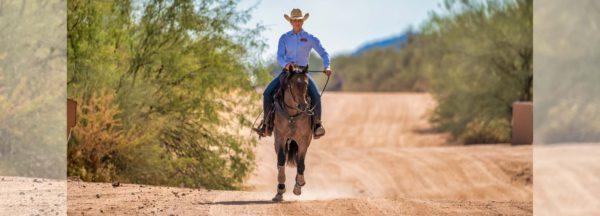Training Tip: Practice Transitions to Engage Your Horse

If you want your horse to be tuned in to you and be responsive to your cues, get in the habit of practicing transitions. Transitions are asking the horse to stop, slow down or speed up when you cue him to. They simultaneously work on the horse’s gas pedal and brakes and his overall suppleness.
Examples of specific transition exercises in the Method include: One Rein Stops, Bending Transitions, Yield and Bend, Draw to a Stop, and Drive to a Stop. While those are specific transition exercises, you can turn anything into a transition. For example, if you’re out on the trail, you can trot your horse forward, sit down in the saddle to bring him to a walk and then two-track him. Get a few good steps and then trot him off again. How you incorporate transitions into your training sessions is limited only by your ability to get creative.
As you begin to add transitions (or more of them) into your lessons, you’ll notice three key benefits that I’ll cover in a three-part series.
Benefit #1: Your Horse Will Engage With You
Transitions are the complete opposite of putting the horse on a big, loose rein and letting him motor mindlessly around the arena or down the trail. Throwing in transitions forces the horse to keep his attention on you because he never knows when you’re going to ask him to stop, slow down or speed up.
When practicing transitions with your horse, keep his natural temperament in mind. The shorter the distance between transitions, the more the horse will focus on you. The longer the distance between transitions, the more of a tendency the horse will have to forget about you.
If you’re on a hot horse, keep the distance between transitions short. That way, he doesn’t have an opportunity to build speed and run off.
If you’re on a cold-blooded, lazier-type horse, let him go farther before asking him to slow down. You want to encourage a naturally laidback horse to move forward.
Looking for more training tips? Check out the No Worries Club. Have a training question? Send it to us at [email protected].
